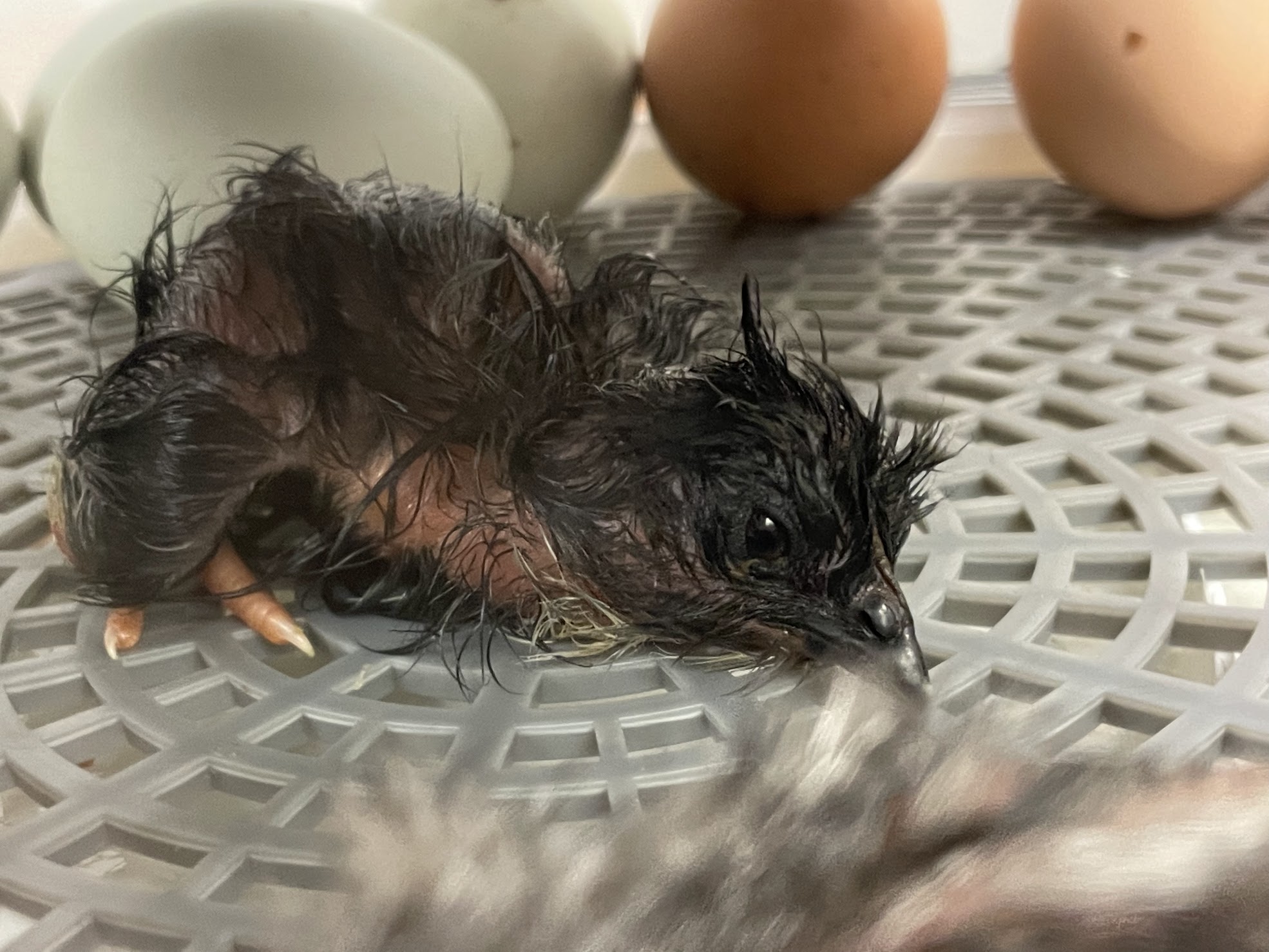Hatching Chicks in the Classroom
go.ncsu.edu/readext?929729
en Español / em Português
El inglés es el idioma de control de esta página. En la medida en que haya algún conflicto entre la traducción al inglés y la traducción, el inglés prevalece.
Al hacer clic en el enlace de traducción se activa un servicio de traducción gratuito para convertir la página al español. Al igual que con cualquier traducción por Internet, la conversión no es sensible al contexto y puede que no traduzca el texto en su significado original. NC State Extension no garantiza la exactitud del texto traducido. Por favor, tenga en cuenta que algunas aplicaciones y/o servicios pueden no funcionar como se espera cuando se traducen.
Português
Inglês é o idioma de controle desta página. Na medida que haja algum conflito entre o texto original em Inglês e a tradução, o Inglês prevalece.
Ao clicar no link de tradução, um serviço gratuito de tradução será ativado para converter a página para o Português. Como em qualquer tradução pela internet, a conversão não é sensivel ao contexto e pode não ocorrer a tradução para o significado orginal. O serviço de Extensão da Carolina do Norte (NC State Extension) não garante a exatidão do texto traduzido. Por favor, observe que algumas funções ou serviços podem não funcionar como esperado após a tradução.
English
English is the controlling language of this page. To the extent there is any conflict between the English text and the translation, English controls.
Clicking on the translation link activates a free translation service to convert the page to Spanish. As with any Internet translation, the conversion is not context-sensitive and may not translate the text to its original meaning. NC State Extension does not guarantee the accuracy of the translated text. Please note that some applications and/or services may not function as expected when translated.
Collapse ▲The ultimate goal of this project is to hatch chicks! Remember that not all eggs will hatch, and prepare your students for this. Don’t name the eggs or even assign students to a specific egg, because it may not hatch. I have hatched out over a thousand eggs and never had a 100% hatch rate. That being said, once some eggs hatch, your students will forget about the other eggs due to the excitement.
Let’s Talk about Lockdown
What is the lockdown period during incubation? Days 18-21 are called ‘lockdown’ because you pull the egg turner out of the incubator, increase the humidity, and don’t open anything up until the hatch is over. Three days before hatching, a hen will sit on her eggs and not move until they all hatch.
The egg turner is taken out and the eggs are left still for three days. This allows the chick to be able to orient itself correctly in order to hatch.
Do not open the incubator during lockdown! Any drop in humidity can be a disaster for a hatch. The humidity is high during the lockdown in order to keep the membranes inside the egg moist and ready for the hatch.
How do Chicks Hatch?
It can take up to 24 hours for a chick to fully hatch from the egg. It is critical that you not help any chick out of its egg during the hatch. Chicks absorb their blood vessels just prior to exiting the egg, so if you help a chick out of an egg, you could create a situation where they bleed out and die.
The general rule of thumb is that if a chick can not get out of the egg on their own, they are not healthy enough to make it outside the egg.
Chicks begin hatching by ‘pipping.’ You will see a small place on the egg where they have made a move from the egg to come out. Pipping allows the chick to be able to breathe during the process.
Here is a video from a hatch I did in June of 2021 where many eggs have pipped:
Next, chicks will start to ‘zip’ out of the egg. ‘Zipping’ is where they begin to break out of the egg by opening the egg as though there was a zipper around the egg. Below is a photo of a chick that has already hatched next to an egg that is ‘zipping.’ This is from a hatch I did in March 2023.

Once a chick hatches, they are wet and need to fluff up. They also sleep a lot the first day of their lives, it takes a lot of work to break out of an egg and they are tired. So it may look like your chicks are dead, but they are just sleeping — trust me! Do not open the incubator until after the entire hatch is over!
Chicks can stay in the incubator for 24 hours without food or water. They absorb the remainder of the yolk right before hatch to give them energy and nutrients. This gives everyone time to safely hatch and dry off!
Here is a photo from a hatch in March 2023 of a newly hatched chick:

Here is a video from NC State Extension with a livestream of hatching chicks:




